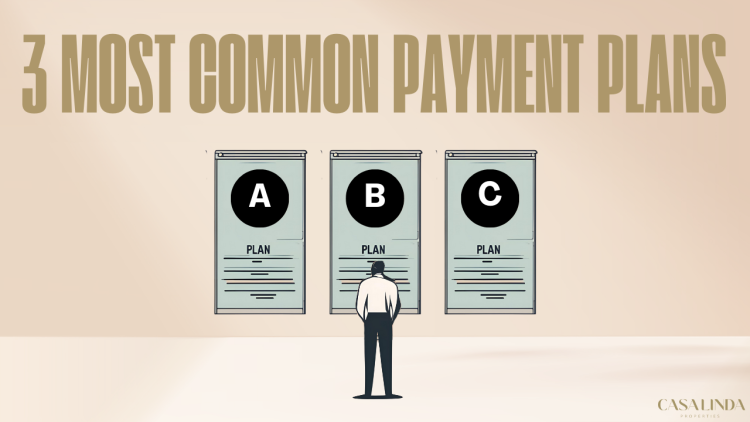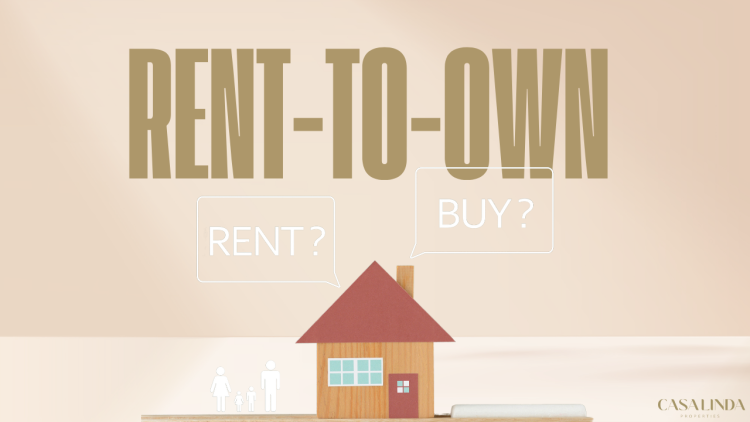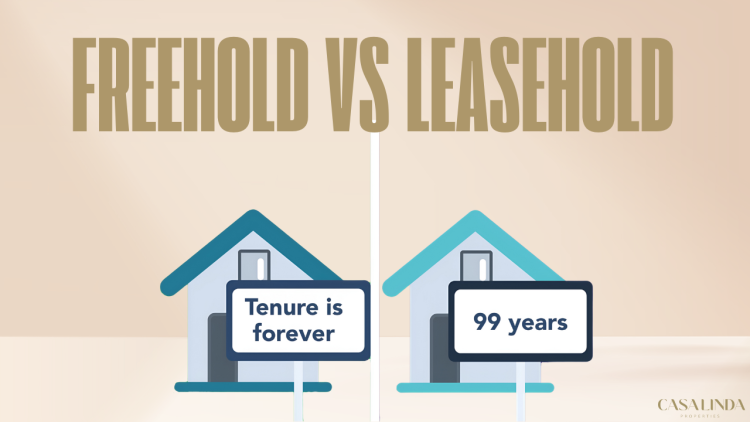Unlocking Homeownership: The 3 Most Common Payment Plans for Dubai Property
Content:

Introduction
Dubai's real estate market is a dynamic landscape characterized by luxurious properties, high investment returns, and a cosmopolitan lifestyle. However, the challenge of making full upfront payments can deter many potential buyers. Therefore developers have introduced flexible payment plans catering to diverse financial situations to address this barrier.
This article explores the three most common payment plans—Rent-to-Own (RTO), Post-Handover Payment Plans, and Payments in Installments—highlighting their unique features, benefits, and key considerations to help you make informed investment decisions.
Current Market Trends in Dubai Real Estate

The Dubai real estate market is currently experiencing a notable resurgence, with increased demand and rising property values. Many expatriates and foreign investors are drawn to the city due to its tax-friendly environment, luxurious lifestyle, and robust infrastructure. Recent reports indicate a rise in property transactions, particularly in popular areas like Downtown Dubai, Dubai Marina, and Dubai Creek Harbour.
Moreover, developers are increasingly offering flexible payment plans to accommodate diverse financial situations, reflecting a shift towards more accessible homeownership options. As more individuals seek to invest in property, understanding these trends and the available payment structures becomes crucial for making informed decisions. This landscape provides a favorable environment for first-time buyers and seasoned investors looking to capitalize on opportunities in Dubai's dynamic market.
1. Rent-to-Own Payments (RTO)

The Rent-to-Own (RTO) payment plan provides a unique pathway to homeownership for buyers who may struggle with full upfront payments. Under this arrangement, potential buyers initially rent a property for a specified period, typically one to three years, with the option to purchase the property at the end of the lease term. During the rental period, a portion of the monthly rent—often 50-70%—is allocated towards the down payment, allowing tenants to gradually build equity.
This plan is particularly advantageous for first-time buyers or expats new to Dubai, as it enables them to enter the housing market without the pressure of a large initial investment. However, it’s essential for buyers to carefully review the terms of the lease agreement, as higher rental payments compared to market rates can impact overall affordability. Popular areas for RTO properties include Downtown Dubai, Dubai Creek Harbour, and Dubailand.
2. Post-Handover Payment Plans

The Post-Handover Payment Plan is ideal for buyers who wish to move into their new property immediately after making a down payment. Buyers typically pay an initial percentage—usually between 5% and 20%—to secure the property. Following this, they can occupy the home while paying the remaining balance in manageable monthly installments over three to five years.
This plan allows buyers to enjoy their new living space without the need for full upfront payment, making homeownership more accessible. Immediate occupancy enables buyers to benefit from property appreciation while settling their financial obligations. Various payment ratios (e.g., 30:70 or 40:60) provide flexibility to align with financial circumstances.
3. Payments in Installments

The Payments in Installments plan is popular for buyers looking to invest in off-plan properties. Under this plan, buyers pay a significant portion of the property's total cost in stages during the construction phase, commonly structured in various ratios (e.g., 25:75, 10:90, 60:40, 50:50, 40:60, and 20:80). This approach allows buyers to make incremental payments while the property is being built, with the remaining balance due upon completion.
Unlike the Post-Handover Payment Plan, buyers cannot occupy the property until construction is complete. This plan benefits those who are comfortable waiting for their investment to materialize and who want to benefit from potentially lower upfront costs. Buyers need to prepare for the duration of construction and ensure their financial plans align with the payment schedule, making it suitable for those focused on long-term investment.
Real-Life Examples
Case Study 1: First-Time Buyer Using Rent-to-Own
Emily, a young professional new to Dubai, was eager to own a home but was overwhelmed by high upfront costs. She opted for a Rent-to-Own (RTO) plan, renting a modern one-bedroom apartment in Dubailand for three years, with 50% of her monthly rent contributing to the down payment.
This arrangement allowed her to enjoy her new neighborhood without immediate financial pressure. After two years, Emily decided to purchase the apartment, using the equity she had built to secure a manageable mortgage. This experience not only provided her with a comfortable living space but also boosted her confidence in navigating Dubai's real estate market and inspired her to consider future investments.
Case Study 2: Seasoned Investor Using Post-Handover Payment Plans
David, a seasoned investor, aimed to diversify his portfolio by purchasing a luxury apartment in Downtown Dubai. He opted for a Post-Handover Payment Plan, making a 10% down payment to secure the property and moving in immediately. The remaining balance was structured into manageable monthly installments over the next four years.
This plan allowed David to enjoy his new home while capitalizing on rising property values in the area. Additionally, he plans to rent out the apartment, generating income to help cover his monthly payments and further enhance his investment strategy.
Benefits and Considerations
Benefits
- Financial Flexibility: Each payment plan allows buyers to manage their finances without large upfront payments.
- Equity Building: Plans like RTO enable tenants to accumulate equity over time.
- Rental Income Potential: Post-handover and RTO plans allow buyers to generate rental income while paying down their investment.
- Risk Mitigation: Payments linked to construction progress or tenancy reduce financial risks.
Considerations
- Market Conditions: Buyers should assess the current real estate market and potential future property values, as fluctuations can impact investment returns.
- Commitment Levels: Each payment plan involves a long-term commitment that may affect relocation flexibility.
- Additional Costs: Buyers must be aware of fees associated with property transactions, such as registration fees, maintenance costs, or penalties for late payments.
- Contractual Obligations: Understand the terms of any agreement, including penalties for non-compliance or missed payments.
Conclusion
Understanding the different payment plans available for buying property in Dubai is essential for informed investment decisions. Rent-to-own, Post-Handover Payment Plans, and Payments in Installments each offer unique advantages that cater to various financial situations and lifestyle choices.
As you explore these diverse payment plans, the Casalinda Properties team is here to support you every step of the way. We are dedicated to helping you navigate these options, ensuring you select the plan that best aligns with your needs and real estate goals. Whether you’re a first-time buyer eager to settle into your dream home or a seasoned investor looking to expand your portfolio, our expertise will empower you to make informed decisions. With our guidance, you can confidently embark on your property journey and turn your aspirations into reality.
Frequently Asked Questions (FAQ)
- What happens if I can't make a payment under a Rent-to-Own agreement?
In a Rent-to-Own agreement, failing to make a payment can have serious consequences. Typically, you may lose the equity you’ve built up and risk eviction. It’s crucial to review the lease terms and understand the penalties for late or missed payments.
- Are there any hidden fees associated with these payment plans?
While payment plans offer flexibility, buyers should be aware of potential additional costs such as registration fees, maintenance costs, or penalties for late payments. Always read the contract carefully to identify any extra charges that may apply.
- How do I choose the right payment plan for my situation?
Choosing the right payment plan depends on your financial situation, how quickly you want to move into the property, and your long-term goals. Consider factors like your income stability, plans, and how much equity you wish to build before making a decision.
- Can I sell the property before completing the payment plan?
Most payment plans have specific terms for selling the property before the full payment. It's essential to consult the contract for any restrictions or penalties related to pre-closure.
- What types of properties are eligible for these payment plans?
Most payment plans apply to various properties, including apartments, townhouses, and villas. However, availability can vary by developer and location, so it’s best to research specific projects that offer the plans you're interested in.



